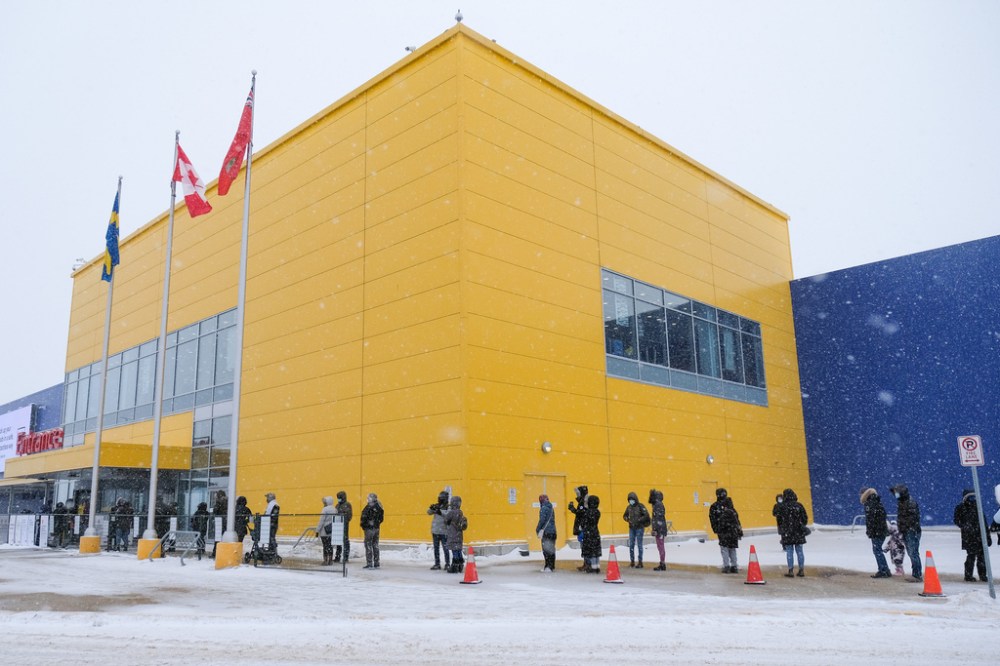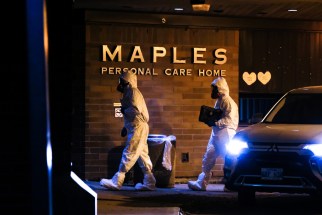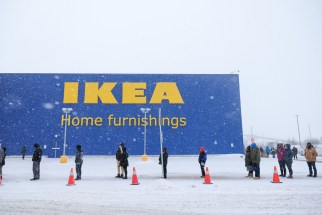Shopping for trouble
Read this article for free:
or
Already have an account? Log in here »
To continue reading, please subscribe:
Monthly Digital Subscription
$0 for the first 4 weeks*
- Enjoy unlimited reading on winnipegfreepress.com
- Read the E-Edition, our digital replica newspaper
- Access News Break, our award-winning app
- Play interactive puzzles
*No charge for 4 weeks then price increases to the regular rate of $19.00 plus GST every four weeks. Offer available to new and qualified returning subscribers only. Cancel any time.
Monthly Digital Subscription
$4.75/week*
- Enjoy unlimited reading on winnipegfreepress.com
- Read the E-Edition, our digital replica newspaper
- Access News Break, our award-winning app
- Play interactive puzzles
*Billed as $19 plus GST every four weeks. Cancel any time.
To continue reading, please subscribe:
Add Free Press access to your Brandon Sun subscription for only an additional
$1 for the first 4 weeks*
*Your next subscription payment will increase by $1.00 and you will be charged $16.99 plus GST for four weeks. After four weeks, your payment will increase to $23.99 plus GST every four weeks.
Read unlimited articles for free today:
or
Already have an account? Log in here »
Hey there, time traveller!
This article was published 25/01/2021 (1779 days ago), so information in it may no longer be current.
This couldn’t have been what public health officials wanted.
At big-box stores around Winnipeg last weekend, long lines of people huddled in the cold to buy formerly “non-essential” items in person. At the biggest indoor shopping malls, hundreds crowded common areas as they hopped from store to store. Parking lots crammed with vehicles in volume mall staff said approached Boxing Day levels.
In announcing the easing of COVID-19 pandemic restrictions, effective Saturday, Manitoba public health officials had pleaded for restraint. They didn’t get it.
Now, other business owners left in lockdown — bars and restaurants, nail salons and tattoo parlours, just to name a few — are pulling their hair out with frustration at the images of those weekend crowds.
Did officials err in their decision to reopen certain businesses or alter the accompanying rules on capacity limits?
In general, Premier Brian Pallister’s decision to abandon the preposterous “essential” and “non-essential” designations to determine which businesses should be open, and focus more on risk assessment for certain places and activities, was a step forward in pandemic management.
However, a combination of factors worked to undermine Pallister’s best efforts.
A lack of specific details in some of the new orders, gigantic loopholes in others, and a chronic lack of delayed gratification from stir-crazy Winnipeggers helped to spark conditions counter to what Dr. Brent Roussin, chief provincial public health officer, had hoped for when the restrictions were modified last week.
The vagueness on household gatherings caused a lot of confusion, after Manitobans began to do the calculus around the so-called “Rule of Two.”
Manitobans are now allowed to have visits at their home from two designated people. However, there is nothing preventing my two people from being designated to visit several other homes. If you have four people in your house, each person could theoretically be allowed to visit four different houses. If that is happening at everyone’s house, the Rule of Two has the potential to expose an exponential number of people to each other.
On the retail side, the vagaries and loopholes were no less compelling.
The public health order requires all open businesses to limit patrons to 25 per cent of normal capacity, to a maximum of 250 people.

It requires malls to adhere to a 25 per cent capacity limit — but there is no maximum number. Hence, indoor lineups and crowded common areas.
The big question that lingers is simple. What poses a greater risk: prolonged indoor contact with a single person or shorter indoor contact with 250 people?
Scientifically speaking, there is no clear answer. COVID-19 is easy to contract and, with the arrival of new variants, increasingly so. Beyond the observation you are vulnerable to the virus anytime you step outside your home, there is currently no consensus on which activities, places or conditions pose the greatest risk.
That hasn’t prevented efforts to create a hierarchy.
Roussin noted Manitoba has taken some guidance from Health Canada, which has categorized places and activities into low, medium and high risk. Manitoba is currently not allowing any of the activities in Ottawa’s high-risk column, which include bars and nightclubs, professional sports or cultural events, casinos, crowded indoor restaurants and gyms.
Of those deemed medium risk by Ottawa, Manitoba has allowed some but not others. For example, it has loosened restrictions on hair salons/barbershops, shopping malls and funerals. Movie theatres, outdoor restaurants and public pools remain closed.
Health Canada: Risk assessment
It’s important to note Ottawa’s risk assessments are pretty arbitrary and, in some instances, downright ambiguous. It includes “crowded indoor restaurant” as a high-risk place, but does not have an assessment for a sparsely occupied restaurant.
So, are you less at risk when you share the air at a crowded indoor mall with several hundred people, spend one hour enjoying a sit-down meal, or two hours in the chair getting a tattoo?
Again, there is no science to help make a firm and definitive risk assessment. Common sense will tell you all these activities carry some degree of risk and, if you were going to rely solely on science, you would keep everything locked down.
However, public policy is only partly guided by science.
The trump card in this entire mess — the one thing that could be a real game changer when it comes to fully reopening the economy — is our capacity as individuals to do the right thing.
If we all stayed home when we were sick, isolated from family when sick or awaiting test results, limited time in crowded spaces, limited visits to other households, wore non-medical masks in public, and practiced appropriate hand hygiene, we’d have many more options for reopening the economy.
Unfortunately, the only certainty in this most uncertain crisis has been our inability to do the right thing.
dan.lett@freepress.mb.ca

Born and raised in and around Toronto, Dan Lett came to Winnipeg in 1986, less than a year out of journalism school with a lifelong dream to be a newspaper reporter.
Our newsroom depends on a growing audience of readers to power our journalism. If you are not a paid reader, please consider becoming a subscriber.
Our newsroom depends on its audience of readers to power our journalism. Thank you for your support.









